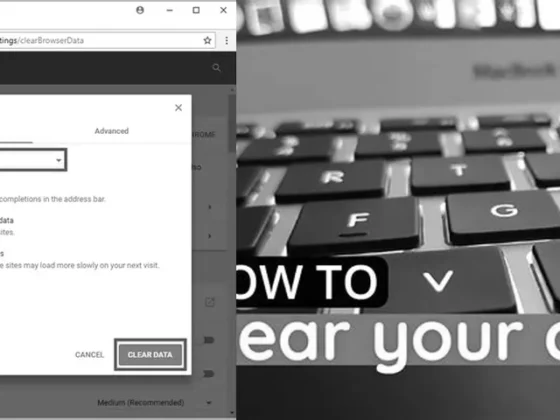How Can I Easily Check My FPS on a Chromebook and Boost Performance? – Are you a proud owner of a Chromebook but find yourself wondering, “How do I check my FPS on Chromebook?” Well, fret not, because we’ve got you covered! Whether you’re a gamer or simply curious about your device’s performance, understanding your FPS (frames per second) is essential. In this comprehensive guide, we’ll walk you through the process of checking your FPS on a Chromebook, compare performance across different operating systems, and even share some tips to enhance your Chromebook’s FPS. So, buckle up and get ready to unleash the full potential of your Chromebook!
Understanding FPS and Its Importance
FPS, or Frames Per Second, is a crucial metric in the world of computing that measures the number of individual frames or images that are displayed on your screen every second. It’s a term often associated with video gaming where a higher FPS count translates to smoother on-screen motion, providing a more immersive gaming experience. However, FPS is not just limited to gaming; it’s also important in video playback and web browsing, affecting the overall visual fluidity and responsiveness of the content you’re viewing.
Why FPS Matters on Your Chromebook
For Chromebook users, FPS can be a determining factor in the performance of web-based applications, Android apps, and even Linux VMs. Given that ChromeOS confines the framerate to 60 FPS outside of these applications, knowing how to monitor and optimize FPS can be beneficial for a range of tasks from professional video editing to casual web surfing.
How to Check FPS on a Chromebook
Checking your FPS on a Chromebook is a straightforward process that can be done within the Chrome or Edge browsers. This feature is particularly useful when you’re trying to assess your browser’s performance or troubleshooting issues with video playback or animation smoothness on websites.
Using the Command Menu in Chrome
- Press Ctrl+Shift+P (or cmd+Shift+P on Mac) to open the Command Menu.
- Type “FPS” into the Command Menu.
- Select the “Show Frames Per Second (FPS) Meter” command from the list of options that appear.
Once you’ve followed these steps, a small FPS meter will appear on your screen, allowing you to monitor the frame rate of your browser in real-time. This tool is invaluable for web developers and power users who want to ensure that their browser is operating at optimal efficiency.
Comparing FPS Performance Across Operating Systems
Chromebook users who are accustomed to Windows may find it useful to understand how FPS monitoring differs between the two operating systems.
Monitoring FPS on Windows
Windows provides an integrated Game Bar feature designed to display FPS and other vital performance stats:
- Press Win + G to bring up the Game Bar overlay.
- The performance window will appear, showing your FPS among other statistics.
- Move the performance window to your preferred location on the screen and click the pin button to keep it visible.
- Press Win + G again to close the Game Bar.
While ChromeOS does not have a native equivalent to the Game Bar, the method provided for Chromium-based browsers offers a comparable way to check FPS.
Enhancing Your Chromebook’s FPS
If you find that your FPS reading is not up to your expectations, there are several strategies you can employ to improve it. These adjustments can help streamline your browsing experience and potentially increase your FPS on a Chromebook.
Optimize Chrome Browser Settings
Start by reviewing your browser settings. Disable any unneeded visual effects and ensure that hardware acceleration is enabled if your hardware supports it.
Disable Unnecessary Extensions
Extensions can consume system resources. Review your installed extensions and remove those that are not essential to your daily workflow.
Clear Cache and Cookies
Over time, your browser accumulates data that can slow down performance. Regularly clearing your cache and cookies can help maintain a high FPS.
Allocate Sufficient Resources
Ensure that your Chromebook has the necessary resources for smooth performance. Close unused tabs and applications to free up memory and processing power.
Conclusion
Monitoring and optimizing FPS on your Chromebook can greatly enhance your computing experience, especially if you engage in activities that demand high visual performance. By using the Command Menu in Chrome or Edge, you can easily keep an eye on your FPS and take steps to improve it as needed. Remember that maintaining a clean and efficient browser environment is key to achieving the smoothest possible performance on your Chromebook.
Whether you’re a casual user or a hardcore gamer, understanding and managing FPS is an essential skill that will help you get the most out of your device. With the tips provided in this post, you should now be able to confidently check and enhance your FPS on Chromebook, ensuring a seamless digital experience.
FAQ & Related Questions about How Do I Check My FPS On Chromebook?
Q: How can I check my FPS on a Chromebook?
A: To check your FPS on a Chromebook, you can use the Command Menu in Chromium-based browsers like Edge or Chrome. Press Ctrl+Shift+P (or cmd+Shift+P on Mac) to open the Command Menu, then type “FPS” to display the Show Frames Per Second (FPS) Meter command.
Q: Can I check my FPS performance on Windows?
A: Yes, you can check your FPS performance on Windows. Press Win + G to bring up the overlay and display the performance window. This window shows vital stats, including your FPS. You can move the performance window to a convenient location on your screen.


